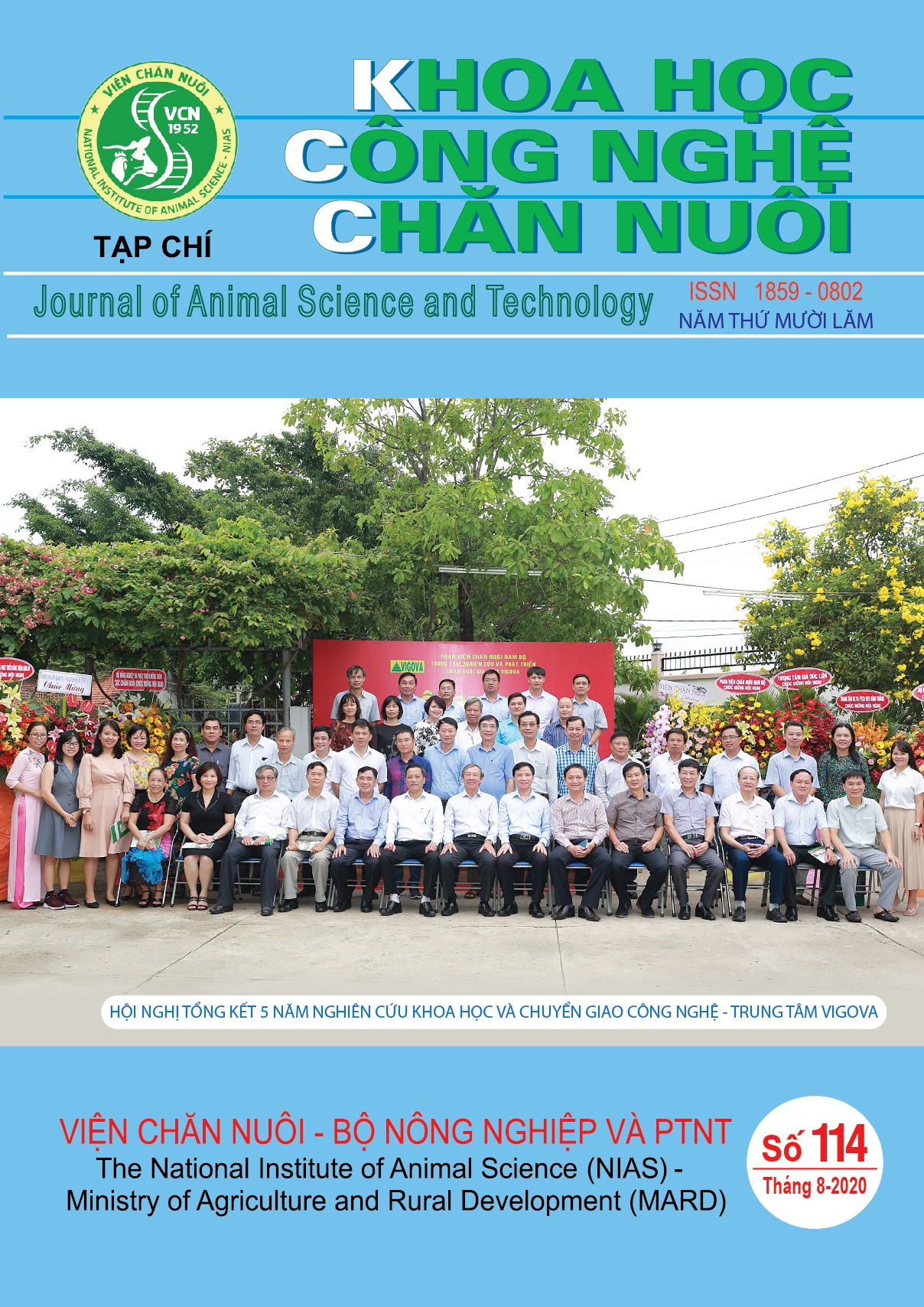The results of selection and creation of two sea duck lines for production in mangrove area
This study was conducted from the 2017 to 2020 at VIGOVA duck breeding farm, Binh Duong province. Selection method based on estimates of breeding values (EBV) by Best Linear Unbiased Prediction (BLUP) and economic coefficients of traits. Two- lines of sea duck have been created (maile line VB3 and femail line VB4) through 4 selective generations. Age at first egg laying, egg production per female to 42 laying weeks (EN52), egg weight (EW), FCR (feed conversion ratio)/10 egg, embryo rate and hatchability on set eggs of the VB3 line were 159 days, 221.93 eggs, 81.06 g, 3.41 kg, 93.44% and 77.74%; These parameters on VB4 line were 152 days, 245.86 eggs, 78.95 g, 3.18 kg, 96.17% and 80.67%. Heritability coefficients (h2) of body weight at 7-weeks-old and egg number at 20 laying weeks of VB3 line were 0.41 và 0.22. Heritability coefficients (h2) of body weight at 8-weeks-old, egg number at 20 laying weeks and egg weight at 19-20 laying weeks of VB4 line were 0.27, 0.25 and 0.44. Genetic progress (∆G) in body weight at 7-weeks-old and egg number at 20 laying weeks of VB3 line reached 43.46 g/generation và 0.45 egg/generation. ∆G VB3 line’s body weight at 8-weeks-old, egg number at 20 laying weeks and egg weight at 19-20 laying weeks of VB4 line were 17.65 g/generation and 0.77 egg/generation và 0.52 g/generation in correspondence. Body weigh at 7-weeks-old of VB3 and VB4 lineson male and female with liberal diet reached 2706.40 g, 2604.80 g and 2483.80 g, 2363.40 g respectively. FCR/body weigh gain 7-weeks-old of VB3 and VB4 lines were 2.57 kg and 2.66 kg.

